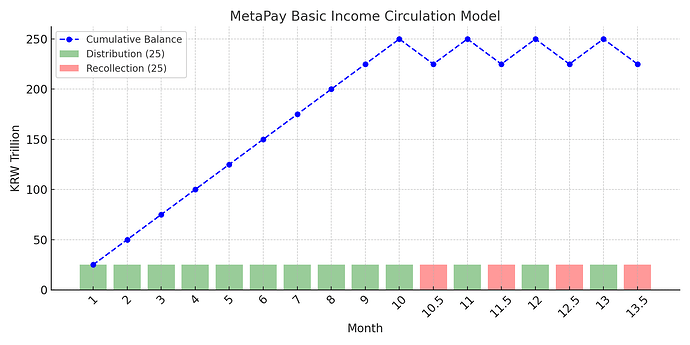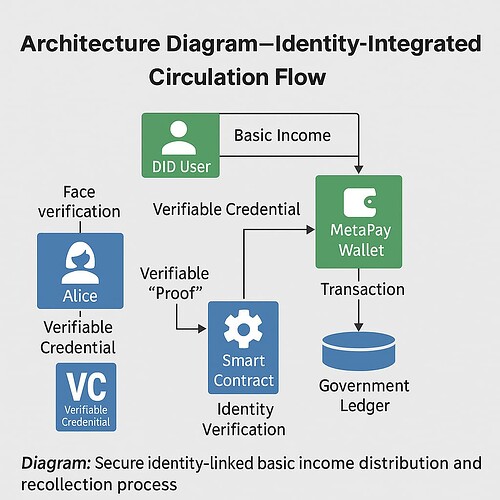[MetaPay] A Circulating Basic Income Model with Digital Currency
 Overview
Overview
MetaPay is a programmable, circulating basic income system that distributes funds through digital wallets and recollects a fixed percentage to ensure sustainability — without raising taxes or relying on additional government budgets.
 Problem
Problem
Most basic income proposals fail due to unrealistic funding models. They often depend on higher taxation, increasing national debt, or complex redistribution mechanisms that generate political resistance and economic inefficiencies.
 Our Solution
Our Solution
MetaPay operates on a simple yet powerful loop:
- An initial fund of 250 trillion KRW
- Distributed over 10 months (25 trillion KRW/month)
- Starting from month 10, 10% of each wallet’s remaining balance is recollected at the end of each month
- The recollected funds are used to fund the next cycle
This creates a self-sustaining system with zero net government burden and maximum benefit for citizens.
 Key Features
Key Features
- All payments and recollections are processed exclusively via digital currency
- Wallets automatically split payments: 50% MetaPay + 50% cash or card
- No restrictions on how the income is used
- Higher-income users contribute more through greater spending, while lower-income users retain full benefit
- Fully trackable, automated, and transparent
 What We Need
What We Need
We are seeking collaborators who can support:
- Smart contract development
- Tokenomics modeling and analysis
- UX/UI simulation and digital wallet architecture
- Stress testing on the Hyperion Testnet
Let’s bring MetaPay to life — and demonstrate how real-world programmable basic income can scale sustainably and fairly.


